In 2025, organisations face rising pressures to ensure compliance, safety, and efficiency across their operations. The environmental monitoring system has become essential for meeting regulatory demands and maintaining business continuity. This guide offers a comprehensive overview, diving into the fundamentals of environmental monitoring, the latest technologies, how to select and implement the right system, proven best practices, and upcoming trends. Discover how new solutions address today’s challenges, see the benefits of robust environmental monitoring, and gain practical steps to drive success for your facility.
Understanding Environmental Monitoring Systems: Fundamentals and Scope
Environmental risks and compliance standards are evolving rapidly, making the environmental monitoring system a cornerstone of modern operational resilience. Whether safeguarding sensitive equipment or ensuring safe air quality, these systems deliver critical oversight that organisations need in 2025.
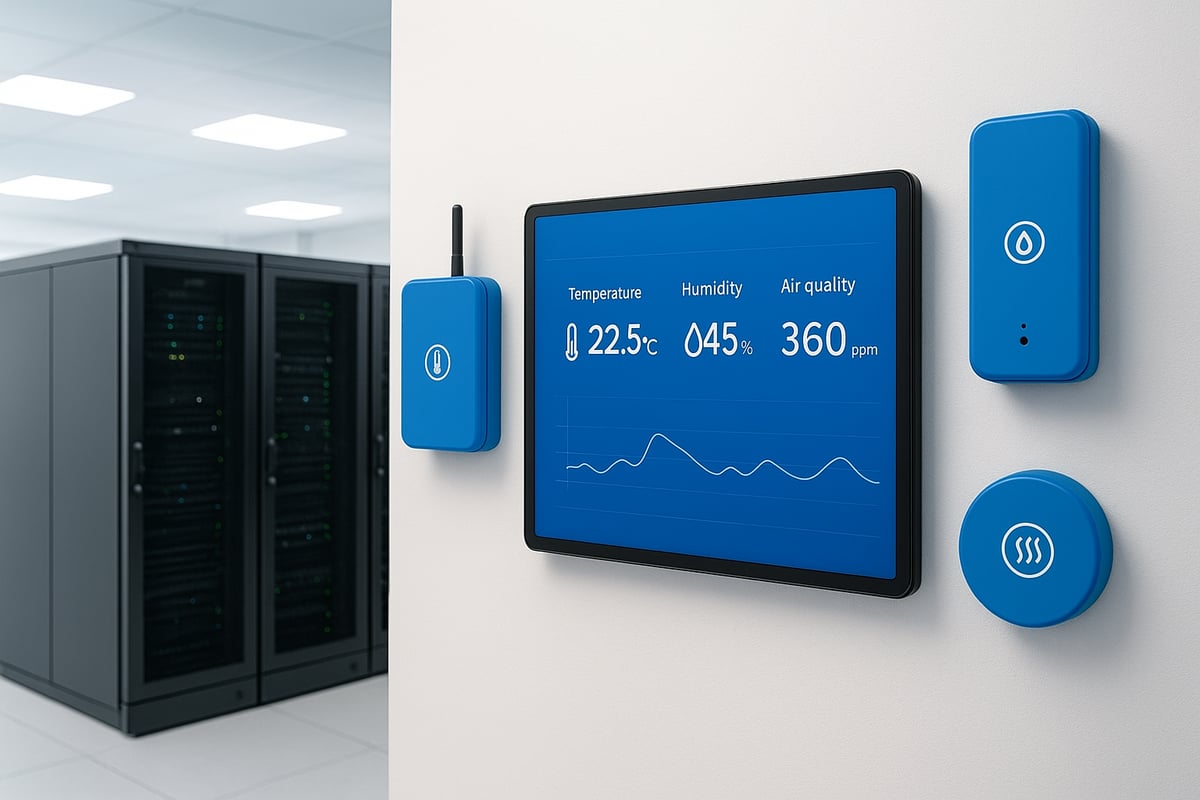
What Is an Environmental Monitoring System?
An environmental monitoring system is a networked solution designed to track and manage key environmental conditions within a defined space. At its core, the system uses advanced sensors, data loggers, communication modules, and intuitive software platforms to collect, store, and analyse environmental data.
These systems are versatile, supporting a wide range of environments like data centres, laboratories, offices, and industrial facilities. They continuously monitor parameters such as temperature, humidity, air quality, water leaks, and smoke to detect anomalies before they escalate into critical incidents.
A typical data centre environmental monitoring system, for example, will monitor temperature, humidity, and water leaks across multiple racks to protect uptime and prevent costly hardware damage. For a closer look at the vital role of sensors in these systems, our Smart sensor technology overview explains how integrated technologies underpin reliable monitoring.
| Parameter | Typical Sensor Type | Example Environment |
|---|---|---|
| Temperature | Thermistor | Data centre |
| Humidity | Hygrometer | Laboratory |
| Air Quality | Gas sensor | Office |
| Water Leak | Conductive cable | Server room |
| Smoke | Optical detector | Industrial facility |
Why Environmental Monitoring Matters in 2025
Implementing an environmental monitoring system is no longer optional for organisations that value compliance, safety, and operational efficiency. Regulatory requirements such as ISO standards and HSE guidelines now demand robust environmental data collection and reporting.
The absence of a well-designed environmental monitoring system can result in downtime, asset loss, and increased operational risks. In fact, industry data reveals that effective monitoring can reduce incidents by up to 94 percent, highlighting the significant impact on business continuity.
Sustainability is also a growing priority. With pressure to reduce carbon footprints and improve energy efficiency, organisations rely on accurate environmental data to inform green initiatives. Ultimately, a comprehensive environmental monitoring system supports health, safety, and uninterrupted operations, positioning businesses for success in a rapidly changing regulatory landscape.
Applications and Use Cases
The environmental monitoring system is essential across a broad spectrum of industries. In data centres, these systems support thermal mapping, power usage effectiveness (PUE) monitoring, and digital twin modelling for optimal energy use.
Pharmaceutical and laboratory environments depend on precise control of temperature and humidity to maintain compliance and product integrity. Facility managers use monitoring systems for early detection of HVAC failures, fire, and water leaks, while security teams benefit from integrated access control and occupancy tracking.
A compelling case is the server room equipped with an environmental monitoring system that prevented a costly outage. By detecting a subtle rise in humidity and water presence near a rack, the system triggered an alert, allowing rapid intervention before equipment damage occurred.
Key Technologies Shaping Environmental Monitoring in 2025
The pace of innovation in environmental monitoring system technology is accelerating rapidly. In 2025, organisations face increasing demands for precision, compliance, and seamless integration. Understanding these technologies is essential for choosing and deploying the right environmental monitoring system for your needs.
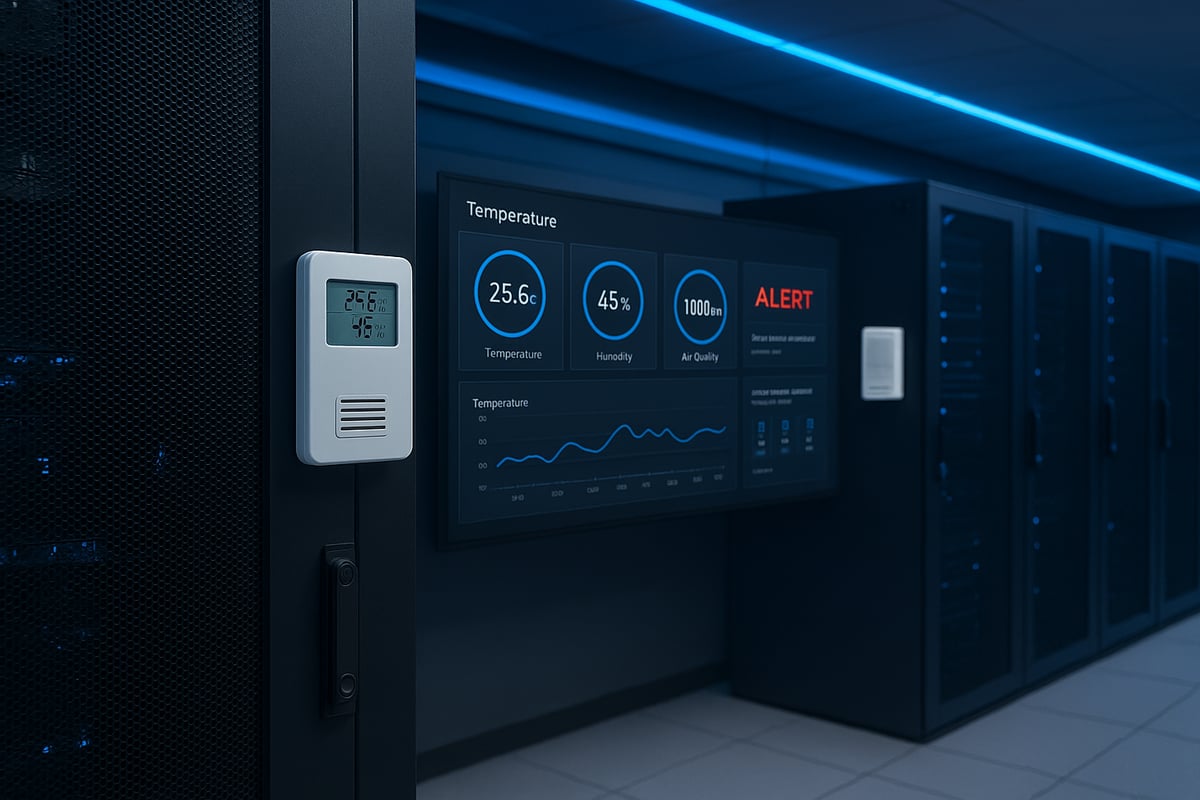
Sensor Innovations and Connectivity
Sensors are at the heart of every environmental monitoring system. In 2025, you'll find an extensive range of sensors tracking temperature, humidity, airflow, air quality, water presence, smoke, and noise. These devices come in wired, wireless, and IoT enabled formats, each with unique advantages.
Wired sensors offer robust reliability and minimal interference, making them ideal for critical environments like data centres. Wireless sensors excel in legacy buildings or sites where cabling is impractical, allowing for rapid deployment and flexibility. IoT enabled sensors, using technologies like Narrowband IoT, GSM/LTE, Wi Fi, and Ethernet, provide remote access and scalability for multi site operations.
Multi sensor devices are gaining traction, enabling comprehensive monitoring from a single unit. For a deeper dive into the sensor landscape and their roles, see this Indoor air quality sensors guide.
Centralised Monitoring and Software Platforms
A modern environmental monitoring system depends on powerful software platforms. Centralised dashboards bring all sensor data together, offering real time alerts, intuitive data visualisation, and historical analytics.
Cloud based platforms allow remote access and multi site management, empowering teams to respond quickly to incidents. Integration with Data Centre Infrastructure Management (DCIM) and Building Management Systems (BMS) ensures seamless facility oversight. Leading platforms, such as AKCPro, support advanced features like continuous Delta T and Power Usage Effectiveness (PUE) monitoring.
Automated reporting and compliance tools within these platforms simplify audits and help maintain regulatory standards. Centralised management reduces manual effort and streamlines operations across diverse environments.
Data Analysis, AI, and Automation
Artificial intelligence and automation are transforming how environmental monitoring system data is used. AI powered analytics enable rapid anomaly detection, flagging unusual patterns and reducing false alarms.
Machine learning models can predict equipment failures or environmental risks, allowing for proactive maintenance. Automated protocols can trigger responses like shutting down sensitive equipment, activating alarms, or adjusting HVAC systems.
Trend analysis tools help identify long term facility improvements, supporting both operational efficiency and sustainability goals. By leveraging AI, organisations can stay ahead of issues and optimise their environments continuously.
Security and Integration Capabilities
Security is an integral aspect of every environmental monitoring system. In 2025, systems are designed to work alongside access control, fire suppression, and occupancy monitoring solutions.
Combining environmental and security data provides a holistic view of facility health, helping protect critical assets from both environmental threats and unauthorised access. Integrating these systems within server racks or secure rooms enables rapid detection and response to incidents.
Unified dashboards make it easier for teams to monitor and manage both environmental and security parameters, reducing risk and enhancing operational continuity. Robust integration capabilities ensure that your monitoring system remains adaptable as your facility evolves.
Step-by-Step Guide: Planning and Deploying an Environmental Monitoring System
Implementing an environmental monitoring system is a structured process that demands careful planning and execution. Each phase is crucial to ensure regulatory compliance, operational efficiency, and the ongoing protection of assets and people. Follow these steps to guarantee a successful deployment tailored to your environment's unique needs.

Step 1: Assessing Needs and Defining Objectives
Begin by evaluating your facility’s specific risks and compliance requirements. Identify all critical assets that could be affected by environmental changes, such as servers, laboratory samples, or sensitive electronics. Consider legal obligations, like ISO standards or HSE guidelines, that your organisation must meet.
Engage stakeholders from IT, facilities management, and compliance teams to define clear objectives. Are you aiming to prevent downtime, improve energy efficiency, or enhance health and safety? For example, a school may prioritise vape detection and air quality monitoring to safeguard pupils and staff.
Create a checklist of key parameters to monitor. These might include:
- Temperature and humidity
- Air quality and particulate levels
- Water leaks and smoke presence
A thorough assessment provides the foundation for a robust environmental monitoring system that matches your operational goals.
Step 2: Selecting the Right Sensors and Devices
Choosing the right sensors is vital for the effectiveness of your environmental monitoring system. Start by determining which environmental parameters are most relevant to your setting. For a data centre, temperature, humidity, and water leaks are priorities, while a laboratory may also require CO2 and particulate sensors.
Evaluate each sensor’s accuracy, measurement range, and reliability. Consider the form factor that suits your space, such as rackmount, DIN rail, or compact wireless modules. Compare leading brands like APC, Eaton, Vertiv, and HW Group, focusing on their reputation for quality and support.
Key selection criteria include:
- Measurement accuracy and calibration options
- Connectivity (wired, wireless, IoT compatibility)
- Power requirements and battery life
- Scalability and integration with existing systems
Budget planning is also essential. Balance upfront costs with long-term scalability, ensuring your environmental monitoring system can expand as your needs evolve.
Step 3: Designing System Architecture and Connectivity
With your sensors chosen, design the architecture of your environmental monitoring system. Map out optimal sensor placement to ensure comprehensive coverage of all risk areas. In a data centre, this may mean positioning temperature and humidity sensors near critical racks and HVAC outlets.
Select connectivity solutions that align with your infrastructure. Options include Ethernet for reliability, Wi-Fi for flexibility, and GSM or LTE for remote or backup access. Plan for redundancy by including backup communication pathways and power supplies.
Integration with existing IT, Building Management Systems (BMS), or Data Centre Infrastructure Management (DCIM) platforms streamlines operations. Ensure your design supports future expansion, allowing new sensors or monitoring points to be added without major reconfiguration.
A well-designed architecture maximises the value of your environmental monitoring system by delivering accurate, real-time data where it matters most.
Step 4: Installation and Configuration
Careful installation is key to a reliable environmental monitoring system. Physically mount sensors in designated locations, following manufacturer recommendations for height, orientation, and environmental exposure. Use secure cabling and ensure all devices have stable power supplies.
Configure monitoring software to recognise each sensor and set alert thresholds based on your risk assessment. For example, a pharmaceutical lab might set strict humidity limits to maintain regulatory compliance. Establish centralised dashboards for real-time oversight and enable remote access if required.
Test connections and verify that all sensors report accurate baseline readings. Document each installation step and maintain clear records for future reference or audits.
A structured installation process reduces downtime and ensures that your environmental monitoring system operates as intended from day one.
Step 5: Testing, Validation, and Staff Training
Once installed, thoroughly test your environmental monitoring system. Calibrate each sensor, simulate alerts, and verify that notifications reach the correct personnel. Validate system performance against regulatory standards and internal policies.
Train staff on using the monitoring dashboards, responding to alerts, and performing basic troubleshooting. Provide clear documentation and standard operating procedures to support ongoing management.
Regular drills and refresher training sessions help maintain readiness. Well-trained staff are essential to maximising the benefits of your environmental monitoring system and ensuring rapid response to incidents.
Step 6: Ongoing Monitoring, Maintenance, and Optimisation
Continuous improvement is at the heart of a successful environmental monitoring system. Schedule regular health checks, firmware updates, and sensor recalibrations to maintain accuracy. Review system data to identify trends, optimise alert thresholds, and adapt to changing risks.
Establish a maintenance calendar and assign responsibility for routine checks. It is also advisable to review best practices for handling alerts and incident response, as outlined in resources like Best practice for handling alerts.
Document all updates and performance reviews. Use insights from ongoing monitoring to justify upgrades or expansions, ensuring your environmental monitoring system remains effective and compliant as regulations and technologies evolve.
Best Practices for Environmental Monitoring System Success in 2025
The success of any environmental monitoring system in 2025 will depend on a strategic approach grounded in compliance, reliability, integration, scalability, and cost management. By following these best practices, organisations can maximise value and ensure robust protection for their environments.

Aligning with Regulatory Standards and Compliance
Staying compliant with evolving regulations is a top priority for any environmental monitoring system. Familiarity with standards like ISO, HSE, or sector-specific guidance is essential. Automated reporting and audit trails simplify compliance, making it easier to demonstrate adherence during inspections.
For example, pharmaceutical manufacturers often rely on environmental monitoring system data to meet MHRA guidelines. Regularly updating protocols and ensuring documentation is up to date will help maintain compliance as regulations shift.
Ensuring Data Accuracy and Reliability
The foundation of a dependable environmental monitoring system is data accuracy. Regular calibration and validation of sensors are necessary to prevent drift and false readings. Redundant systems, such as dual sensors and backup power supplies, add an extra layer of assurance.
Real time alerting allows teams to respond rapidly to potential issues. In data centres, using redundant humidity sensors within the environmental monitoring system helps prevent false alarms and protects critical assets.
Integration with Facility Management and Security
A modern environmental monitoring system should not operate in isolation. Integrating EMS with fire suppression, HVAC, and access control systems creates a unified platform for facility oversight. This holistic approach improves response times and reduces risks.
For instance, schools are increasingly integrating air quality and vape detection with security systems. In office environments, office air quality monitoring is now a key best practice, delivering real time insights and supporting employee wellbeing through the environmental monitoring system.
Scalability and Future-Proofing
Planning for growth is vital when investing in an environmental monitoring system. Opt for modular hardware and software that can be expanded or upgraded as needs change. Scalable solutions allow organisations to add new sensors or integrate emerging technologies without major disruption.
Vendor support and regular updates also play a role in future-proofing. For example, office complexes are able to scale their environmental monitoring system as new floors or zones are added, ensuring consistent coverage.
Cost Management and ROI Maximisation
Effective cost management ensures that an environmental monitoring system delivers value over its lifecycle. Consider the total cost of ownership, including hardware, software, and maintenance. Demonstrate ROI by tracking reductions in incidents, downtime, and compliance fines.
A strong case study involves organisations that save thousands by using an environmental monitoring system to prevent downtime, highlighting the tangible benefits of proactive monitoring.
Future Trends and Innovations in Environmental Monitoring
The pace of innovation in the environmental monitoring system landscape is accelerating rapidly. As organisations prepare for 2025, it is essential to understand the emerging trends that will define the next generation of monitoring solutions. From advanced AI to IoT integration and a focus on sustainability, these developments are set to reshape how environments are protected and optimised.
AI, Machine Learning, and Predictive Analytics
Artificial intelligence is transforming the way an environmental monitoring system detects and responds to potential issues. Advanced machine learning algorithms can sift through massive data streams to spot anomalies before they escalate. This predictive approach reduces downtime and enables proactive maintenance.
One breakthrough is deep learning for environmental anomaly detection, which enhances accuracy and minimises false alerts. For example, Time-EAPCR: Deep Learning for Environmental Anomaly Detection demonstrates how AI can identify subtle environmental shifts early, safeguarding critical assets. As self-learning systems evolve, automated response protocols will become even more effective, helping organisations stay ahead of emerging risks.
IoT and Cloud-Driven Monitoring
The proliferation of IoT devices is making the environmental monitoring system more granular and flexible. Wireless sensors can be deployed rapidly across multiple sites, gathering real-time data on temperature, humidity, air quality, and more. Cloud platforms then aggregate this information, providing remote access and centralised control for global operations.
A practical application is seen in modular IoT solutions, such as the IoT System for Cultural Heritage Monitoring, which allows for scalable, low cost monitoring in sensitive environments. Enterprises are leveraging cloud dashboards to oversee diverse facilities from a single interface, improving efficiency and responsiveness.
Sustainability and Energy Efficiency
Sustainability is now a core driver for every environmental monitoring system. Monitoring platforms track energy usage, Power Usage Effectiveness (PUE), and environmental impact in real time. This data supports certifications like BREEAM and LEED, ensuring compliance with green building standards.
Facilities can use these insights to optimise HVAC systems, reduce carbon footprints, and make informed decisions about resource management. As energy costs and environmental regulations tighten, the ability to demonstrate measurable improvements in sustainability is a significant competitive advantage.
Evolving Security and Compliance Demands
Security and compliance are increasingly intertwined with the environmental monitoring system. Integrated monitoring now covers not just environmental parameters but also access, occupancy, and even noise levels. Organisations must adapt to evolving regulations, including data privacy and sector specific standards.
For example, healthcare providers are adopting unified solutions to meet both NHS digital and environmental requirements. As security threats grow more complex, and compliance becomes more demanding, integrated systems offer a holistic approach to protecting people, assets, and data.
Product and Vendor Selection: What to Look for in 2025
Selecting the right environmental monitoring system is crucial for long-term compliance, safety, and operational efficiency. With so many products and vendors available, a structured approach ensures you invest in a solution that meets today’s needs and tomorrow’s challenges.
Evaluating Product Features and Specifications
Begin by assessing each environmental monitoring system for its technical capabilities. Look for sensors that accurately track critical parameters such as temperature, humidity, air quality, and water leaks. Robust connectivity options, including wired, wireless, and hybrid setups, are essential for different facility layouts.
A side-by-side comparison can clarify your choices:
| Feature | APC | Vertiv | Eaton | HW Group |
|---|---|---|---|---|
| Sensor Types | Temp, Hum | Temp, AQ | Temp, Leak | Temp, Hum |
| Connectivity | Wired, WiFi | Wired, IoT | Wired | Wired, IoT |
| Dashboard | Yes | Yes | Yes | Yes |
Consider the sustainability aspect as well. Solutions aligning with ISO 14006: Guidelines for Ecodesign can help organisations enhance their environmental management practices.
Assessing Vendor Reputation and Support
Vendor reliability is just as important as product features. Choose vendors with a strong track record, comprehensive support services, and clear warranty terms for your environmental monitoring system. UK-based support can provide faster response times, which is vital in critical environments.
Look for those offering demonstrations, free trials, and flexible pricing models. For example, a vendor that provides 24×7 support and a 100 day money back guarantee can offer peace of mind and lower risk for your investment.
Ensuring Compatibility and Integration
Seamless integration with your existing infrastructure is vital for maximising the value of your environmental monitoring system. Prioritise solutions that offer open APIs and strong interoperability with Building Management Systems, Data Centre Infrastructure Management, and security platforms.
This allows for unified dashboards and more efficient facility oversight. A well integrated system reduces manual intervention and ensures that new sensors can be added without disrupting current operations.
Planning for Future Needs
When selecting an environmental monitoring system, plan for growth and technology evolution. Choose modular hardware and software that can scale as your facility expands or as regulations change. Regular updates and a clear technology roadmap are signs of a forward thinking vendor.
Staying informed about upcoming compliance trends, such as those outlined in the EPA's FY 2025 Budget Justification, ensures your investment remains relevant and protects against obsolescence.
As you’ve seen throughout this guide, having a reliable environmental monitoring system is essential for maintaining safety, compliance, and operational confidence in 2025. Whether you’re managing a school, office, or leisure space, the right solution can make all the difference in preventing incidents and ensuring peace of mind. If you’re ready to take the next step or want tailored advice on protecting your building with advanced detection and real time alerts, we’re here to support you every step of the way.
Talk to our team and protect your building today

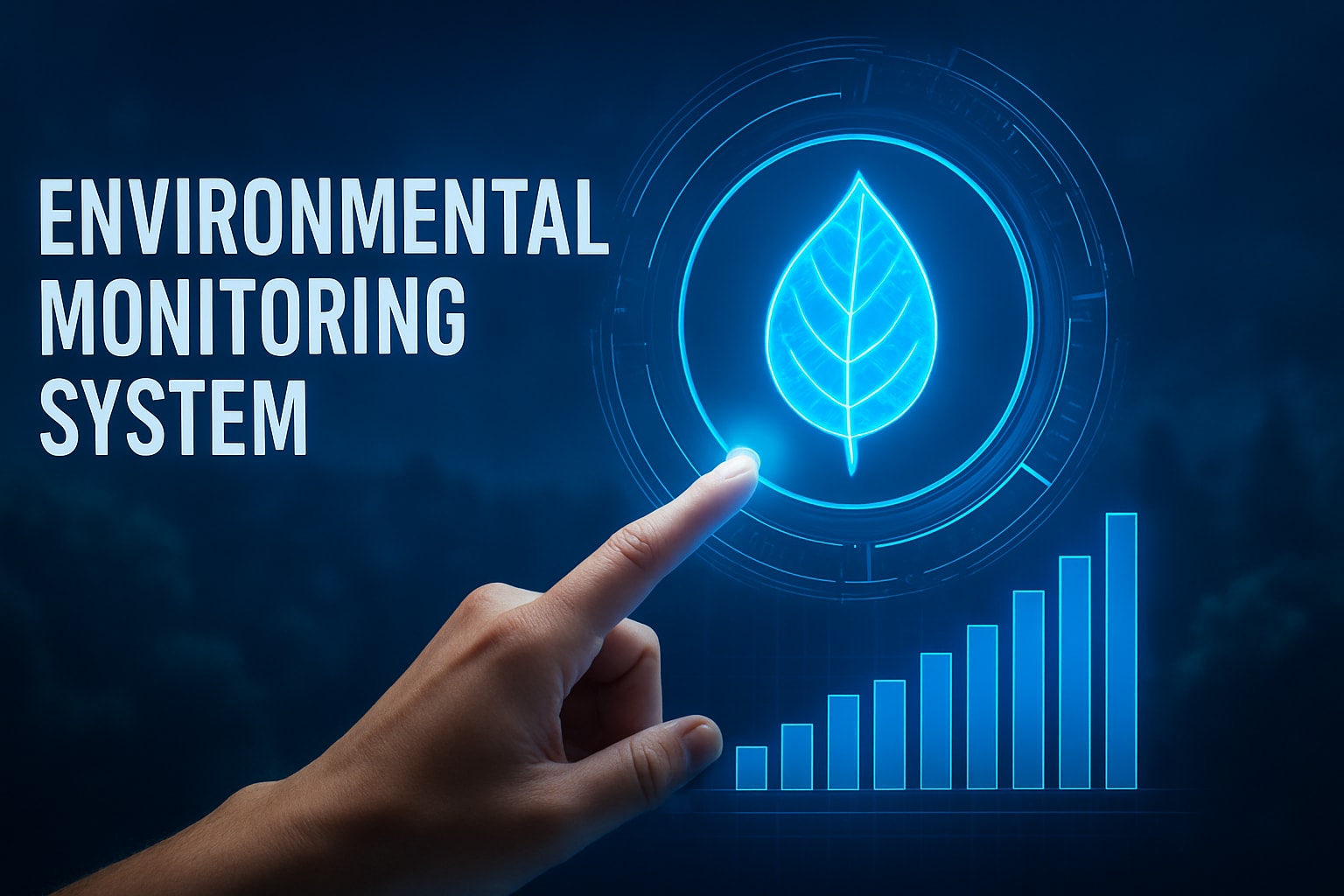
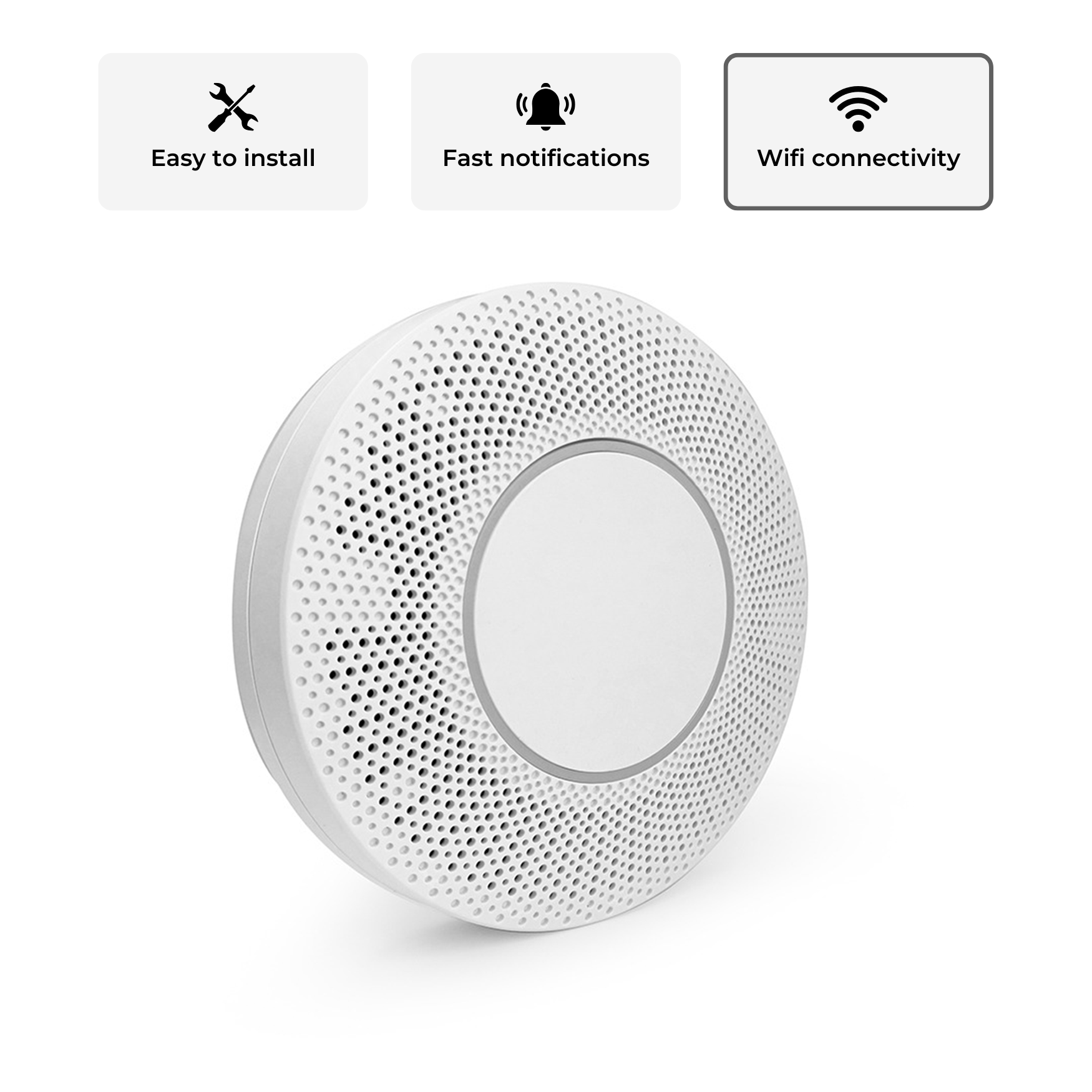
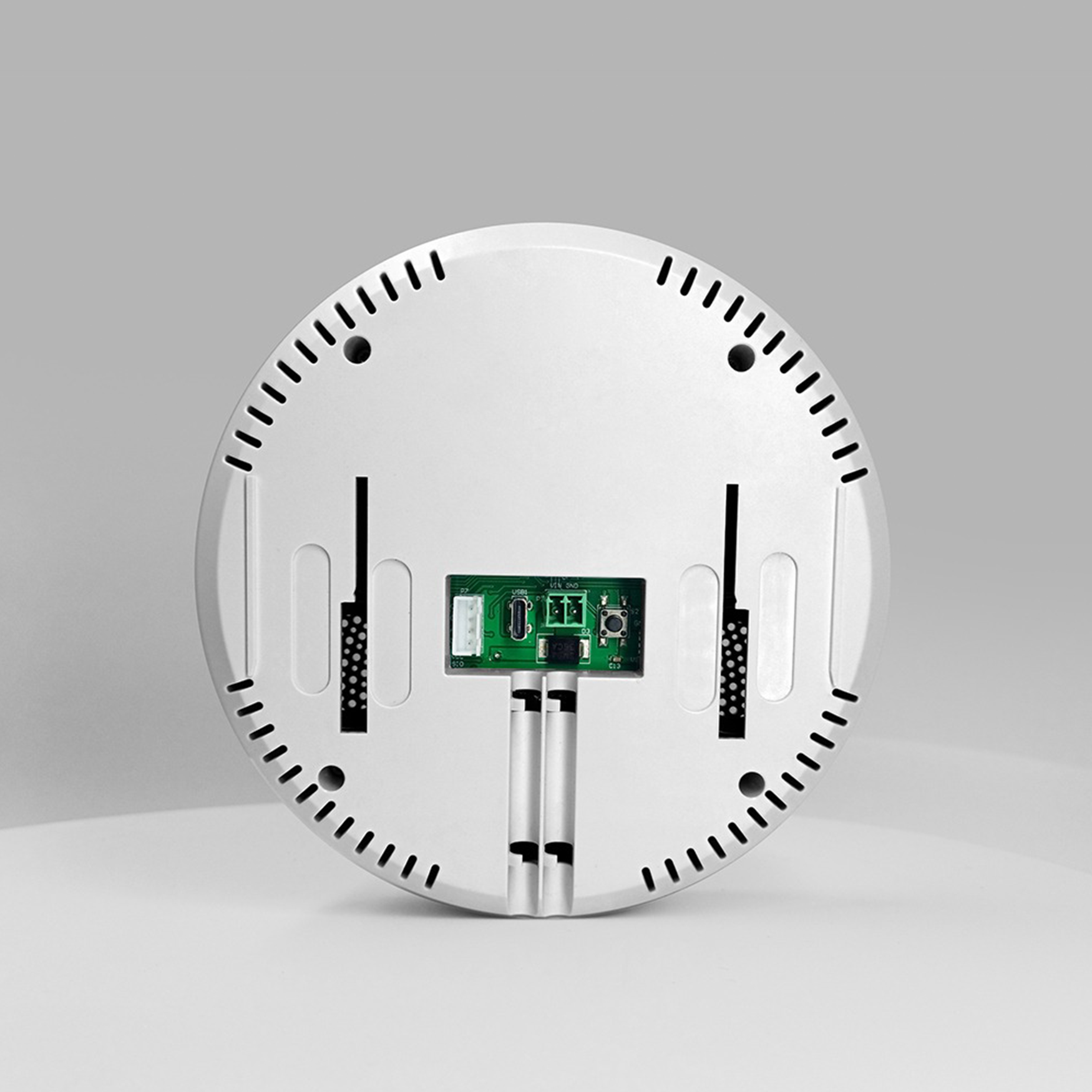

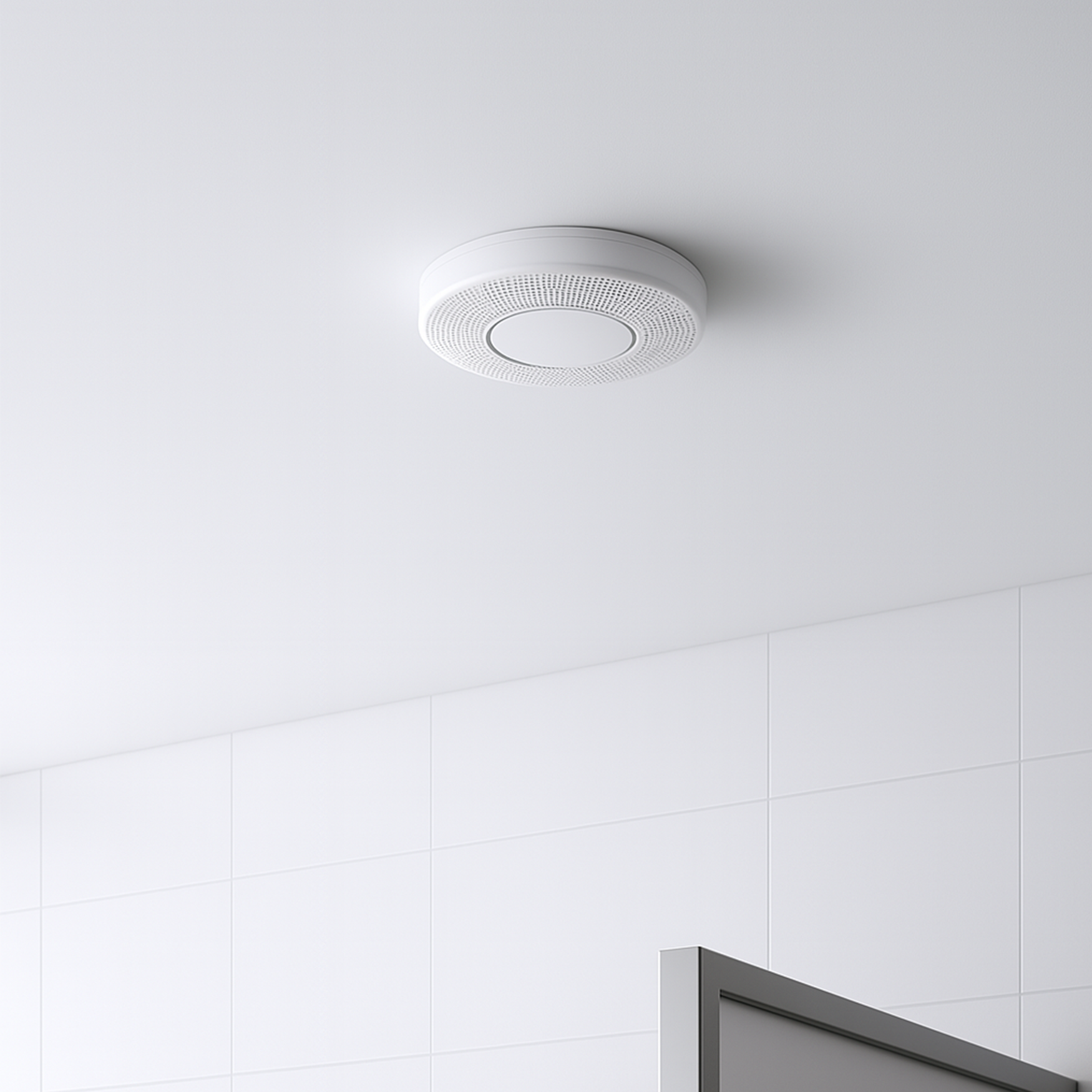
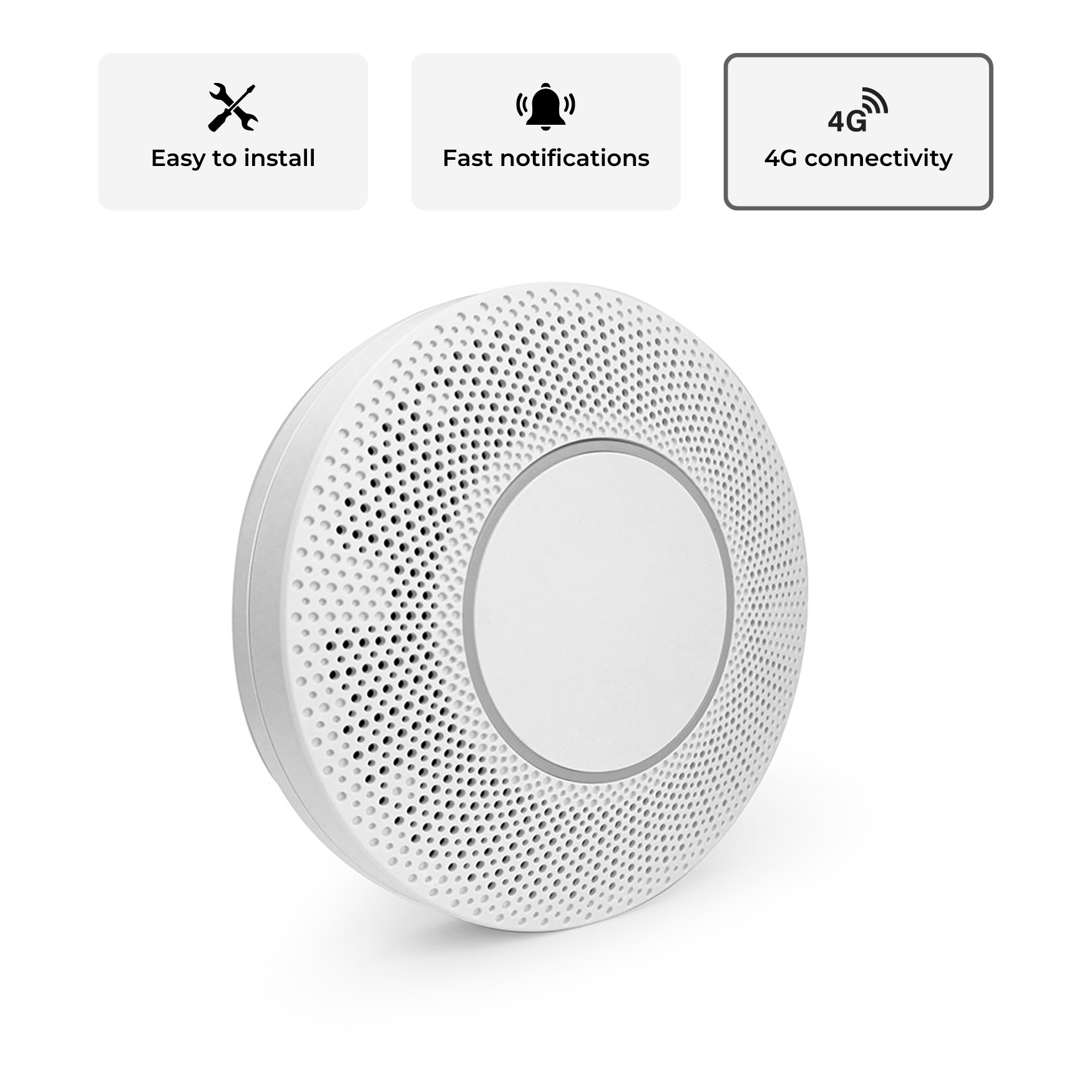

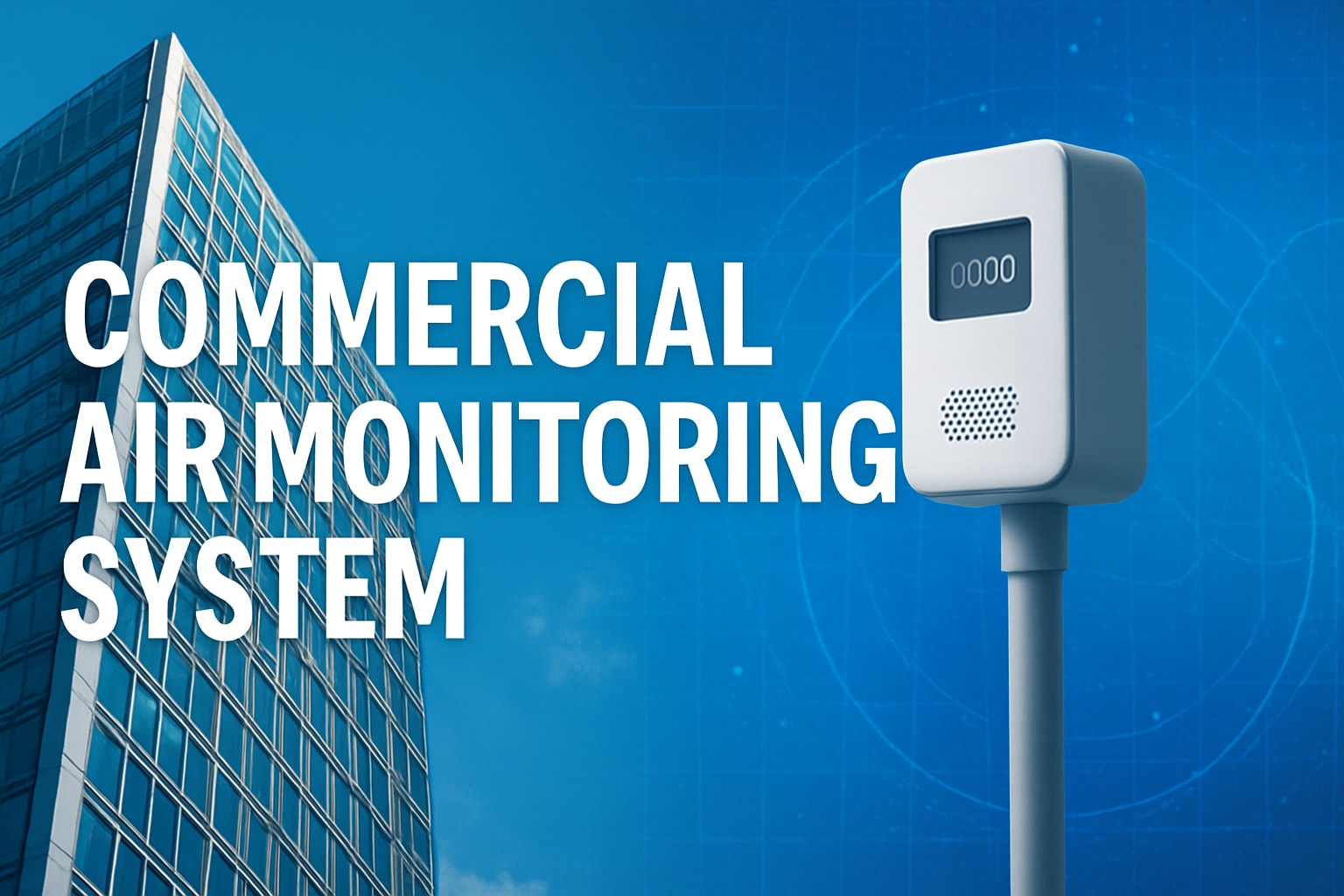


Share:
7 Innovative Uses for Smart Building Sensors in 2025
Smoke Detection Stickers: The Definitive Guide for 2025